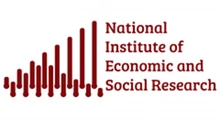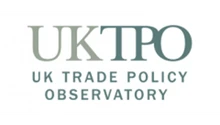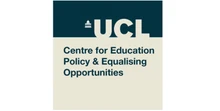Freshwater is essential for human life and economic activity. But rising demand and reduced supply threatens access to water for billions of people. Rethinking pricing and investing in efficiency are essential for policy-makers to address this global challenge.
At school we learn how water moves through the water cycle: evaporation, condensation, precipitation, collection and repeat. This gives the impression that water is a renewable resource. But while it is true that the total amount of water in the cycle is static, that doesn’t mean the system is immune to human activity. Our actions have the potential to disrupt the cycle such that local supplies of clean freshwater become insufficient to meet human demand.
This growing water crisis has been of concern to policy-makers for several years. In 2015, the United Nations (UN) set 17 sustainable development goals (SDGs). The sixth one (SDG 6) set six clean water and sanitation targets for 2030 (UN Regional Information Centre, 2020). But in 2024, it was reported that none of the SDG 6 targets were on track (UNESCO World Water Assessment Programme, 2024). The scale of the problem appears to be well understood, but policy-makers are falling short when it comes to addressing the issue.
What factors are driving the water crisis?
Over the past 20 years, total global levels of terrestrial water storage have fallen (see Figure 1). This is largely due to climate change, both because of melting glaciers and the depletion of groundwater (that is, falling water volumes in lakes, rivers and reservoirs).
Around the world, extreme weather events are also becoming more common, threatening water supplies. In 2024, rainfall was highly unpredictable: record-low precipitation months were 38% more frequent; and record-high 24-hour rainfall events were 52% more common, compared with the baseline period of 1995 to 2005 (Global Water Monitor). Both extremes threaten access to water: droughts deplete supply and floods overwhelm the infrastructure of water management (Pizzorni et al, 2024).
Freshwater access is threatened by growing global demand. This is because water isn’t just necessary for consumption and hygiene, but also for almost all other economic activities. Rapid economic growth and urbanisation in developing countries mean increased demands on local water resources to sustain populations.
To take just one example, the global fashion industry uses approximately 79 trillion litres of water each year and is responsible for 20% of all industrial water pollution (Long, 2025). Indeed, producing a single cotton t-shirt uses the same amount of water as an average person needs to drink in two and a half years.
Other types of economic activity can also affect levels of total water storage. Industrial waste pollutes surface and sub-surface freshwater, rendering it unusable. This threat is not just a problem for developing countries. Six UK water companies are currently facing legal action over the under-reporting of sewage pollution (Plimmer, 2024).
Figure 1: Terrestrial water storage, seasonal fluctuations, 2002-24
Source: Author’s calculations based on Global Water Monitor data
How is global water stress changing?
This downturn in global water supply translates into increased ‘water stress’. Water stress is defined by the UN’s Food and Agriculture Organization (FAO) as the ratio of how much freshwater is being withdrawn by all economic activities in relation to the total renewable freshwater resources available, taking into account environmental flow requirements. A water stress level over 100 indicates that the country is depleting non-renewable freshwater locked in underground aquifers.
Figure 2 shows the change in water stress between 2002 and 2022 (the latest available year of data). In most parts of the world, water stress is on the rise, with some exceptions, primarily in more advanced economies. The lower levels of water stress in developed countries are likely to be due to a mix of factors, including strong renewable water endowments, slower growth in demand and better access to water efficiency technologies for irrigation and industry.
Figure 2: Net change in water stress, 2002-22
Source: Author’s calculations based on FAO data
But this does not mean that these countries do not have problems with water access. Within-country variation in geography, seasonal cycles and distributional capacity mean that even when there are sufficient renewable water resources, the supply might not be accessible to the people who need them all the time.
What role does trade play in water scarcity?
Water ‘moves’ through global trade. This is especially important to consider for countries with low freshwater endowments. Many products, such as agricultural goods, carry with them the water used to produce them. This is known as ‘virtual water trade’ (Global Commission on the Economics of Water, 2023).
If water is heavily subsidised or underpriced in a particular area, then trade can contribute to over-extraction and long-term stress in those regions (Global Commission on the Economics of Water, 2023).
Saudi Arabia illustrates an extreme example of this risk. Despite having limited renewable water resources, the country has subsidised domestic agriculture through access to cheap water, much of it drawn from deep fossil aquifers that cannot be replenished. This encourages the production of water-intensive crops – an unsustainable practice for the country in the long term (FAO, 2008).
What policies do experts recommend to reduce water stress in vulnerable regions?
Researchers have identified some general policy strategies to relieve water-stressed regions. These include:
- Economic policies: re-evaluate water pricing and extraction rights.
- Investment: increase investments in the efficiency of water use.
- Climate resilience: improve adaptability to environmental shocks.
As with any general recommendations, the specific details should be tailored to local conditions.
Economic policies
Many experts are calling for a collective reframing of water as a scarce and essential common good. It is often undervalued in policy discussions as well as within markets. Extraction rights and pricing systems that fail to account for the hidden effects (or ‘externalities’) that come from using this common good lead to inefficient consumption and can direct water-intensive activities to regions that are already water-stressed (Global Commission on the Economics of Water, 2023).
Better pricing through targeted water-use taxes and subsidies could help to manage demand, improve access and support more sustainable use. For example, chip manufacturers like Intel and TSMC have invested in building semiconductor factories (or ‘fabs’) in Arizona – a state known for its dry climate. These facilities require large amounts of water to operate, even though Arizona faces water scarcity and the future of the Colorado River is uncertain.
Despite these challenges, water in the area remains relatively inexpensive (Corona and Migoya, 2024). Better pricing could have given these companies the incentives to locate their facilitates in more water-abundant regions, easing pressure on Arizona’s water system.
There is evidence that better water pricing strategies can work. Despite continued challenges with water stress, China’s revisions to its ‘water law’ have contributed to a 20% reduction in agricultural water use. Among the reforms was a fee system to achieve better alignment of pricing.
Since 1990, withdrawals of agricultural water per hectare of irrigated land have declined by over a fifth. The reforms have even worked in northern China, a region that has seen rapid agricultural development during that period. Over a similar timeframe, total irrigated land area and per capita grain yields have increased significantly. This has freed up water for both industrial and urban users (Doczi et al, 2014).
Investment
The realignment of water pricing could provide incentives for private investment in water efficiency technologies. But targeted investment is also necessary to accelerate change.
In recent years, spending on climate adaptation has grown, but most investments are targeted at the energy transition (that is, efforts to meet the objective of net-zero carbon emissions). Much less attention (and capital) has been devoted to water conservation (Global Commission on the Economics of Water, 2023). Investment in efficient systems could greatly reduce total withdrawal, particularly in agriculture, which accounts for 70% of global water extraction (UNESCO World Water Assessment Programme, 2024).
Figure 3: Contribution to water stress by sector, 2022
Source: Author’s calculations based on FAO data
The need for investment is a global story. Figure 3 shows the breakdown in water use across the seven SDG 6 regions. In all regions except Europe and North America, agriculture is by far the largest user of water. Investment in efficient irrigation practices – such as rainwater harvesting, soil moisture conservation techniques (like mulching and conservation agriculture), efficient irrigation scheduling and integrated farming systems – could reduce overall water consumption (Yadav et al, 2024).
For example, according to FAO research, there are farms in Morocco’s Al Haouz region where water flows through dirt canals instead of channels with protective linings. This means that much of it gets lost by soaking into the ground, leaking out or evaporating in the heat. An inexpensive investment in canal lining could save a significant amount of water (Salman et al, 2019). Sometimes the only ‘technology’ required is some sheets of polythene.
Climate resilience
Climate resilience adaptations also have a role to play. An increasingly volatile climate means that measures must be taken to build more redundancy, contingency and durability into service provision.
Depending on regional particularities, this could mean: managed aquifer recharge to accelerate the rate at which underground water is replenished; increasing water storage capacity to save more water during wet seasons; drilling more boreholes for better groundwater access in remote areas; creating contingency measures to reduce withdrawal automatically under certain conditions; and better management of wastewater (Casey and Crichton-Smith, 2023).
In this area, it is worth highlighting the Horn of Africa Groundwater for Resilience Project – a regional initiative focused on improving water security and climate resilience in the fragile borderlands of Ethiopia, Kenya and Somalia. The project aims to expand access to sustainable groundwater and build long-term resilience in one of the world’s most climate-vulnerable areas.
The project also supports stakeholders in these countries to get a better understanding of the water drilling market, to identify best practices that will reduce the risks of borehole failure and to select suitable management models for future rural water supply schemes. (Vazquez Alvarez et al, 2024). The goal of the project is to improve water supply access to 3.3 million people by constructing or rehabilitating 90 water points by June 2028 (World Bank, 2024).
Conclusion
The global water crisis is no longer a distant or theoretical issue. It is a present and pressing challenge affecting countries and communities all over the world. As climate change escalates and demand continues to rise, addressing the crisis will require both immediate and long-term action.
Reforms of water pricing, smarter investment in water use efficiency and climate-resilient infrastructure are crucial pillars for ensuring sustainable and equitable freshwater access. What’s at stake is not just environmental protection, but global economic and social stability.
Where can I find out more?
- Watercommisssion.org: a website of the Global Commission on the Economics of Water that uses animated and interactive data visualisation to tell the story of the water crisis.
- The UN World Water Development Report 2024: water for prosperity and peace – executive summary: a UN report on the status of the world’s water resources.
- Global Water Monitor 2024 report: a report explaining geographical variation in water statistics using charts and short write-ups on specific regions.
Who are experts on this question?
- Mariana Mazzucato (UCL and Global Commission on the Economics of Water)
- Peter Gleick (Pacific Institute)
- Jim Hall (University of Oxford and Environmental Change Institute)
- Hannah Cloke (University of Reading)
- Sandra Postel (Global Water Policy Project)









































